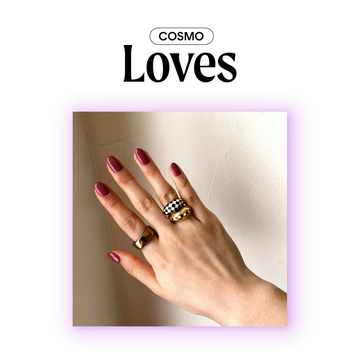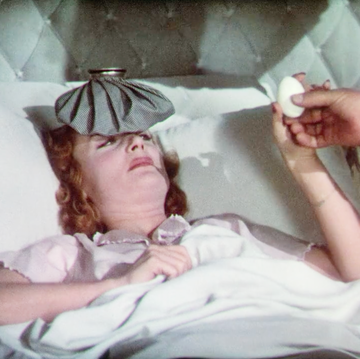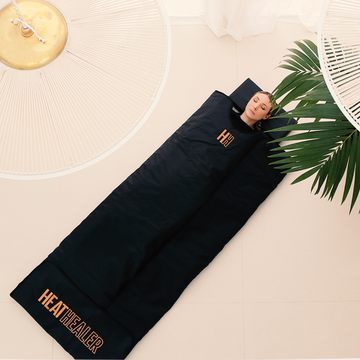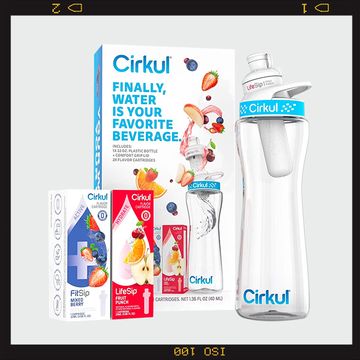You know that Halloween candy isn’t exactly medicinal, but there’s something especially wrong-seeming about candy corn. It bears so little resemblance to the vegetable it’s named after that it should be, in and of itself, alarming.
Just in time to suck joy out of everyone’s second favorite Halloween treat (chocolate trumps all, obviously), Charles Platkin, PhD, executive director of the New York City Food Policy Center at Hunter College and editor of DietDetective.com, recently assessed candy corn’s ingredients. Here are the scariest facts:
1. Candy corn contains 12 ingredients. Contrary to popular opinion that candy corn is all sugar, the candy is actually made up of a dozen ingredients: Four different kinds of sweeteners, including sugar, corn syrup, dextrose, and honey, but also the food dyes Yellow 6, Yellow 5, and Red 3, lab-made ingredients that are often vilified for questionable side effects.
2. Candy corn’s colors could be carcinogenic. While Yellow 6 is FDA-approved, it’s been found to cause tumors in animal testing, according to a report on the risks of food dyes published by the Center for Science in the Public Interest (CSPI). Both Yellow 6 and Yellow 5 also run the risk of being contaminated by cancer-causing substances or chemicals that can become cancer-causing once they enter the body — something that’s definitely not written on the package.
Meanwhile, scientists found convincing evidence that Red 3 causes cancer in animals. While the risk led maraschino cherry makers to swap it out for Red 40, the original Red 3 is still used in candy corn. It’s unclear how much candy corn you’d have to eat to affect your health.
3. One of candy corn’s ingredients can trigger itching and hives. While approved for use in the U.S., the coloring Yellow 5 has been linked to rare but sometimes severe allergic reactions, an outcome that could be linked to those impurities it picks up in manufacturing, according to the CSPI report. Because the ingredient adds nothing to food besides making it look prettier, consuming the ingredient could be considered an unnecessary risk.
4. One of its ingredients can make kids go bonkers. Yellow 5, gotta love it: The CSPI report also warns that this coloring can trigger hyperactivity in children, with enough research completed back in 2012 to convince researchers that evidence of a link between artificial food coloring and children’s behavior “too substantial to dismiss.” As if the sugar high kids get from candy corn isn’t enough to spook parents — particularly on Halloween.
5. It provides approximately zero nutritional value. Although 19 candies serve up 140 calories (that’s 7.5 calories per kernel, and all carbs, FWIW), the only trace of nutrients come from the candy’s sesame oil, which happens to be high in vitamin E, according to Platkin. Too bad the treat contains way more sugar than sesame oil. ¯\_(ツ)_/¯.
6. It contains traces of animal hides and bones. Candy corn is made with gelatin, a protein made from animal sources. (So no, it’s not remotely vegetarian.)
7. The candy’s hard outer coating comes from bugs. Candy corn’s firm, smooth coating is listed as confectioner’s glaze on the ingredient label, but the stuff is also known as lac-resin, a coating that comes straight from lac bugs, bright red insects that are found in Asia.
While we eat food made from bugs all the time (hi, honey!) and this doesn’t necessarily pose any safety issues, it’s still good to know when food is made from a chef that has six legs and a set of antennae. At least the coating isn’t made from the bugs themselves. It comes from their encrustations, which the tree sap-feeding larvae leave behind on twigs. Unfortunately, they still look like this:
8. Its shelf life is freakishly long. Sugar itself is a natural preservative that can prolong a food’s shelf life. But candy corn also contains 70 milligrams of salt, another preservative that could help explain why an open bag of candy corn can last up to six months. (While a sprinkle of salt here and there won’t exactly kill you, it’s sneaky AF to find the seasoning hidden in foods that taste more sweet than salty, amiright?!)
9. There’s nothing natural about candy corn’s flavor. Artificial flavoring is responsible for candy corn’s taste. One reason why that taste is so hard to describe (Waxy? Sweet? W/E) could be that "artificial flavoring" can include any of the 700 additives permitted by the FDA, or the 2,000 other chemicals that aren’t directly regulated by the FDA, but sanctioned by the food industry, according to Platkin. (Can you name even half as many foods?)
Get all the ~FiTsPiRaTiOn~ directly in your feed. Follow Facebook.com/CosmoBod.
Follow Elizabeth on Twitter and Instagram.

Elizabeth Narins is a Brooklyn, NY-based writer and a former senior editor at Cosmopolitan.com, where she wrote about fitness, health, and more. Follow her at @ejnarins.















